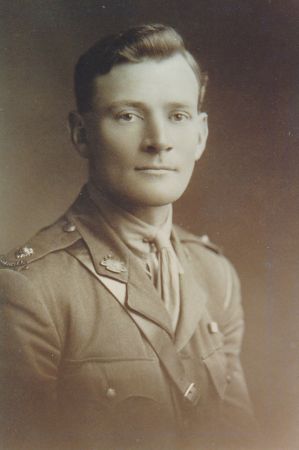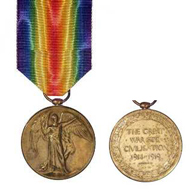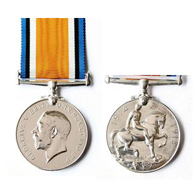WILLIS William Louis
-

- 2086
- Lieutenant
- Trooper, Extra Duty Pay Sergeant, 2nd Lieutenant
- 5 Light Horse Regiment
- 5th Australian Artillery Division
- Woombye
- Yes
- 10 October 1890
- Abbotsford, Picton, New South Wales
- 17 September 1915
- HMAT A62 Wandilla
- 31 January 1916
-
Military:
William Louis Willis enlisted as a Trooper in the 1st Australian Imperial Force (AIF) at Toowoomba (Queensland) on 17 September 1915. At enlistment, Will (as he was known to his wife and immediate family) stated that he had already served four years in the Australian Light Horse (militia), membership of which was compulsory at that time for young men of his age. With respect to his militia service, Military Order 468 of 23 October 1920 indicates that Will was a trooper with the 2nd Australian Light Horse and rose to the substantive rank of Lance Corporal prior to enlisting in the AIF.
Upon enlisting in the AIF Will provided the following details: age 24 years 11 months, height 5`9½", weight 150 lbs, chest 37½", complexion fair, eyes bluish and hair brown. He also stated that he was a farmer. At the time of enlistment his home town was Meringandan, just outside of Toowoomba.
During his service with the AIF Will served in the Middle East (Egypt), France and Belgium with the following units:
5th Australian Light Horse Regiment (14th Reinforcements)
5th Australian Artillery Division
13th Australian Field Artillery Brigade
14th Australian Field Artillery Brigade
25th Australian Field Artillery BrigadeThe 5th Australian Light Horse Regiment, 14th Reinforcements, embarked from Brisbane, Queensland aboard HMAT A62 "Wandilla" on 31 January 1916. The "Wandilla" weighed 7,785 tons with an average cruise speed of 16 knots or 29.63 km/h. It was owned by the Adelaide SS Co Ltd, Adelaide, and manned by Australian officers and during her service by mainly Australian crews. The "Wandilla" was leased by the Commonwealth until 24 January 1917 (http://alh-research.tripod.com/Light_Horse/index.blog/1974768/5th-australian-light-horse-regiment-embarkation-roll-14th-reinforcements/).
Following his arrival in Egypt for training at Tel el Kebir, Will was transferred in March 1916 from the 5th Australian Light Horse Regiment to the 5th Australian Artillery Division (13th Field Artillery Brigade). He was mustered as a Driver and then as a Gunner before being sent to France in June 1916 aboard the "Tunisian". Disembarking at Marseilles from Alexandria, he continued serving with the 13th Field Artillery Brigade and subsequently, at various times, with the 14th and 25th Field Artillery Brigades.
On 25 October 1917, Will was promoted to Temp Bombardier. In January 1918, he was posted to the Royal Artillery Cadet School, St John's Wood in England. In August 1918, he qualified for commission in the Field Artillery. On 4 September 1918, he was appointed Extra Duty Pay Sergeant following which on 19 September 1918 he was commissioned as second lieutenant. He was promoted to lieutenant on 19 December 1918. His appointment was terminated from the AIF on 24 August 1919.
One of the places where Will saw action was Passchendaele (Belgium) during the 3rd Battle of Ypres in 1917. Much has been said about the suffering, misery and devastation wrought by this engagement. For instance, Geoffrey Miller has written "the name of Passchendaele has been synonymous with all that is loathsome in war, it certainly represents the futility and stupidity of warfare" (http://www.gwpda.org/comment/ypres3.html). It has been reported that Australian deaths in the 3rd Battle of Ypres totalled almost one third of overall casualties during the engagement. Indeed, more than 12,000 Australians died at Passchendaele with some 6,000 dying in October 1917 alone. This was the highest monthly total of AIF deaths for the whole of World War I (Ekins 1997, p. 10). The death and destruction inflicted during the engagement was compounded by the appalling weather which in the month of October 1917 "turned the battlefield into a morass. Mud had rendered most weapons useless: guns and tanks became bogged in it; infantrymen's weapons were clogged by it; high explosive shells were buried and smothered in it; mortars and guns sank when fired; and it was almost impossible to haul material across the boggy wasteland" (Ekins 1997, p. 11). Despite the horrendous conditions the engagement was characterised by the courage and heroism of the ordinary soldier. As Miller has observed, "but surely Passchendaele must also epitomize the extraordinary bravery of the fighting soldiers who attempted what was quite obviously impossible but by superhuman efforts of will actually achieved success ..." (http://www.gwpda.org/comment/ypres3.html).
Of the action at Passchendaele involving Will's 13th Field Artillery Brigade on 4 October 1917 the unit's War Diary from the following day states, "Many recommendations from B.G's received. All ranks have done very well indeed and have been frequently in action under very heavy fire for long periods" (http://www.awm.gov.au/collection/records/awm4/13/40/awm4-13-40-20.pdf). Will was one of those commended for their actions on this particular day with the Brigadier-General of the 5th Australian Division recommending that he be awarded the Military Medal for bravery in the Field. The recommendation which led to the award is as follows:
"On the 4th Oct., 1917, during the operations against the PASSCHENDAELE RIDGE East of YPRES, telephonic communication between the Forward Observing Officer and the 50th Battery became impossible to maintain on account of the heavy hostile fire. No. 2086 Gunner W.L. WILLIS who accompanied the F.O.O. proceeded to an exposed position from which he was able to communicate with the Bty. by visual signalling. Notwithstanding the fact that the position he was in continued to be shelled throughout the day this gunner stuck to his post and maintained communication between the F.O.O. and his battery. His devotion to duty and splendid example are deserving of special recognition."
Will was awarded the Military Medal on 18 October 1917. Subsequently, for his services with the AIF Will was also awarded the British War Medal and the Victory Medal.
Following the War, Will returned to Australia from England aboard the "Orontes" on 15 May 1919. Upon his arrival home he was awarded with an Honour Certificate by the residents of Meringandan and District which read as follows:
"For God, King and Country Australian Commonwealth Military Forces 1914 - 19
Lieut. W. L. Willis
Honoured Patriot, Happy in the knowledge of the fact that you have by active service abroad for King and Empire given ample proof of your Patriotism, the residents of Meringandan and district herewith grasp the opportunity of showing our just appreciation of your noble action. Needless to say, we rejoice at your safe return and herewith bid you a hearty welcome home, earnestly praying that you may be long spared to enjoy the glorious liberties which you have to the best of your ability assisted in preserving.
May this slight token of appreciation constantly remind you of a duty nobly and bravely done.
We are yours sincerely, on their behalf, T. C. Morton, C. J Raftery, M. J. McGrath, J. F. Spies, C. Wecker, S. Willis, L. F. O. Wuersching
God Save the King"
Personal:
The eldest of six children, Will was born on 10 October 1890 at Abbotsford, Picton, New South Wales to William and Margaret (nee Mulholland) Willis. In early 1903, tragedy struck the family with the two youngest sons dying within a day of each other from diphtheria. In 1906, the family left Picton to move to Meringandan and took up residence on a dairy farm which was named "Erin Vale".
On 29 September 1915, Will married Mary Hilary Cornell, a local music teacher, who had lived with her family at nearby Gomoran Creek. Will and Hilary subsequently had five children: Ralph, Howard, Roy, Nancy and Ailsa. Following his time away at the War, Will returned to the family farm at Meringandan. In 1926, Will and Hilary and their family moved to Woombye on the Sunshine Coast where they farmed pineapples and other crops. They named their new home "Ingleside" after the place on the Gold Coast hinterland where they had spent their honeymoon. Their children were enrolled at the Woombye State School.
Will was well known for his strong sense of duty and responsibility to others. In addition to being a good family man, Will was actively involved in a range of local community activities. For instance, during the time they lived at Woombye he was a member of the Alexandra Headland Surf Life Saving Club. As well, he regularly attended School Committee meetings of his children's school and would undertake volunteer work on behalf of the school when necessary. Also, Will enjoyed playing lawn bowls, an interest which saw him become a foundation member of the Woombye Bowls Club. For a time he held the position of Club Patron. A booklet prepared to commemorate the Club's Golden Jubilee in 1997 recalled that in contributing to this important community recreational facility Will donated timber from his property for the construction of the ditches surrounding the green. These ditches continued to be in use until 1983 when they were replaced by fibro ditches.
In 1979, the lane to Ingleside was named "Hilary Crescent" in honour of Hilary.
In 1949, Will and Hilary retired to live at Wellington Point near Cleveland in Queensland. When Hilary died in January 1960, Will continued to reside at Wellington Point but made it his practice to regularly visit with his children and their families. It was on one such visit to his daughter who at that time was living in Warwick (Queensland) that he took ill, was admitted to the local hospital, and died on 27 December 1966.
-
- Flanders
- Passchendaele
- Western Front
-

-

-

- 15 May 1919
- 27 December 1966
- Warwick, Queensland
- Brisbane (Mt Thompson Memorial Gardens)
-
Australian War Memorial, Canberra, Honour Roll of the 114th Howitzer Battery, Australian Field Artillery (5th Division Artillery Battery)
Listed in the Nominal Roll of 5th Light Horse Regiment, Second Light Horse Brigade, AIF, War, 1914-1919 of the book The Desert Column by Ion L. Idriess
-
Military Order 468 of 23 October 1920
Australian Light Horse Studies Centre, 5th LHR, AIF, 5th Australian Light Horse Regiment, Embarkation Roll, 14th Reinforcements. Source: http://alh-research.tripod.com/Light_Horse/index.blog/1974768/5th-australian-light-horse-regiment-embarkation-roll-14th-reinforcements/
Australian War Memorial, First World War Embarkation Roll William Louis Willis. Source: http://www.awm.gov.au/research/people/nominal_rolls/first_world_war_embarkation/person.asp?p=306454
Geoffrey Miller 1993, "The Battle of 3rd Ypres (Passchendaele)". Source: http://www.gwpda.org/comment/ypres3.html
Ashley Ekins 1997, "Byways to Hell Australian soldiers in the Battle for Passchendaele", Wartime, Official Magazine of the Australian War Memorial, No. 1, November, pp. 7-13
Australian Imperial Force unit war diaries, 1914-1918 War, Artillery, 13th Australian Field Artillery Brigade, October 1917. Source: http://www.awm.gov.au/collection/records/awm4/13/40/awm4-13-40-20.pdf
Australian War Memorial, Honours and Awards William Louis Willis. Source: http://www.awm.gov.au/research/people/honours_and_awards/person.asp?p=359287
Australian War Memorial, First World War Nominal Roll Page William Louis Willis. Source: http://www.awm.gov.au/research/people/nominal_rolls/first_world_war/page.asp?p=1656986
Robert Longhurst, Mooloolaba Surf Life Saving Club - Our Club, Our Story - 1922-1997. Source: http://www.thesurfclub.com.au/slsc/documents/MooloolabaSurfClubHistory1.pdf
Ron Brunton, Alexandra Headland Surf Life Saving Club 1924-1999 75 Years of Safe Surfing
Alexandra Headland Surf Life Saving Club, History. Source: http://www.rescuesunshinecoast.com/index.php/contact-us/9-alexandra-headland-slsc
Woombye State School, 1885-1985, Centenary Book
Woombye Bowls Club Inc, Golden Jubilee, 1947-1997
- Don Willis



